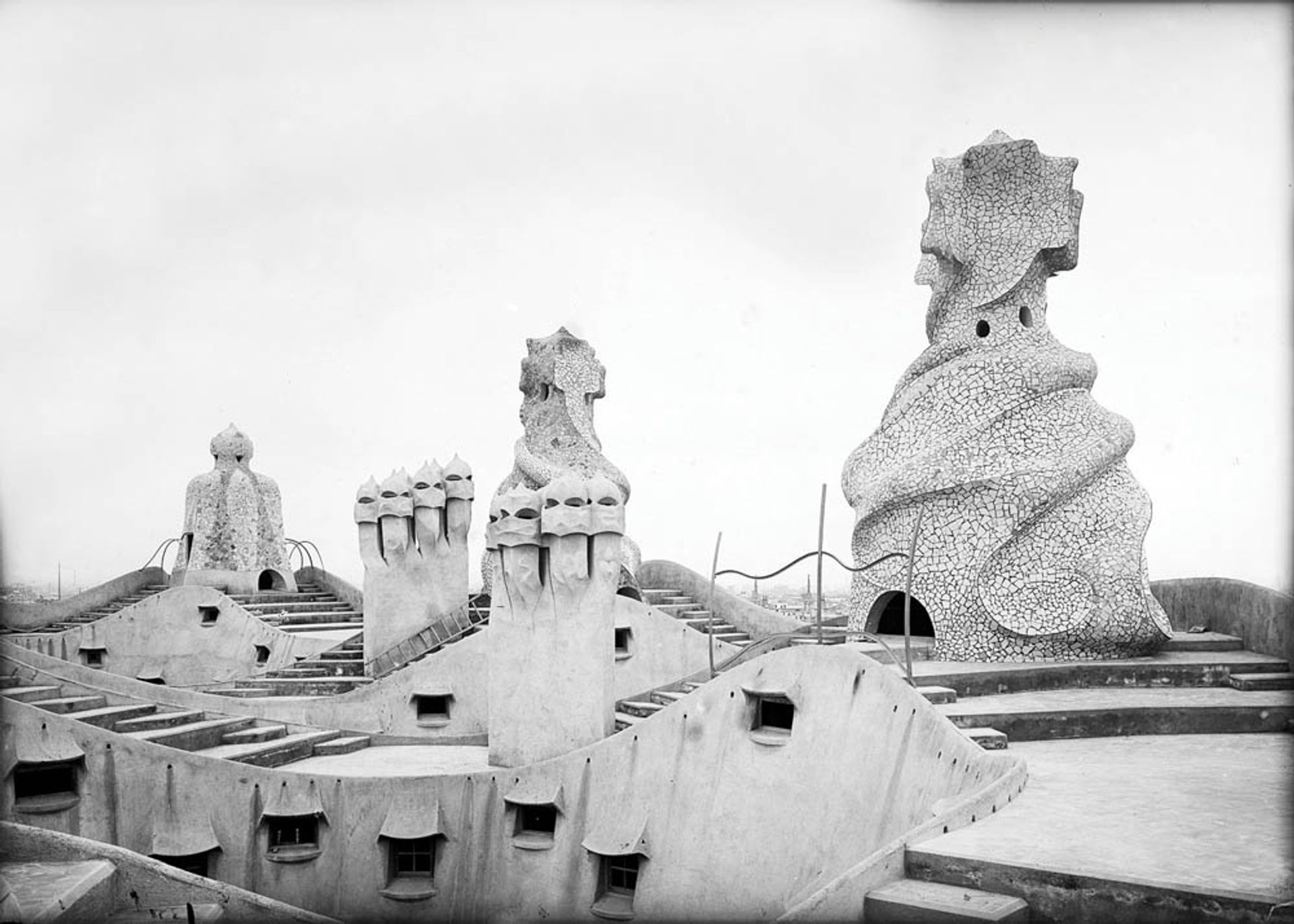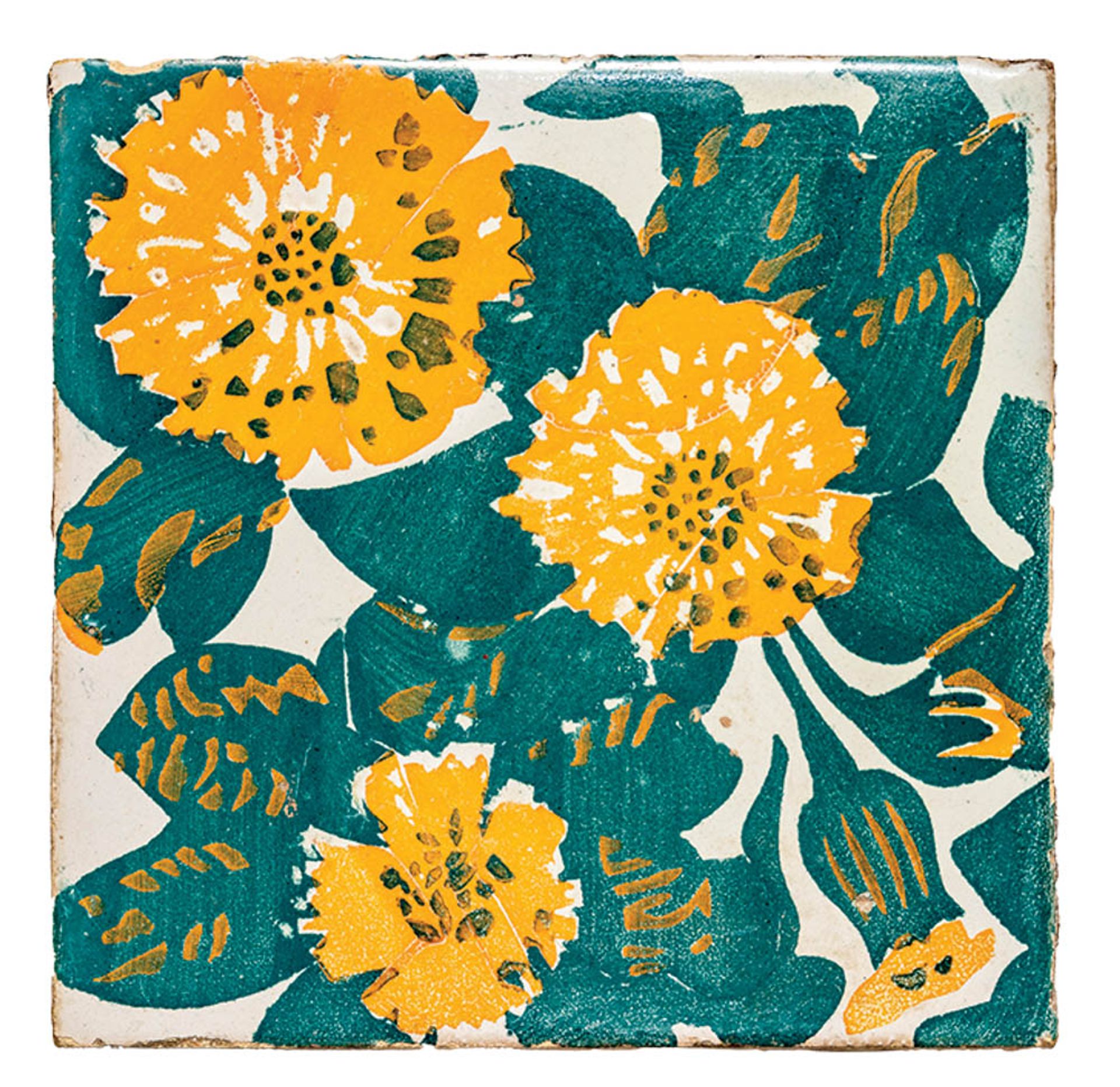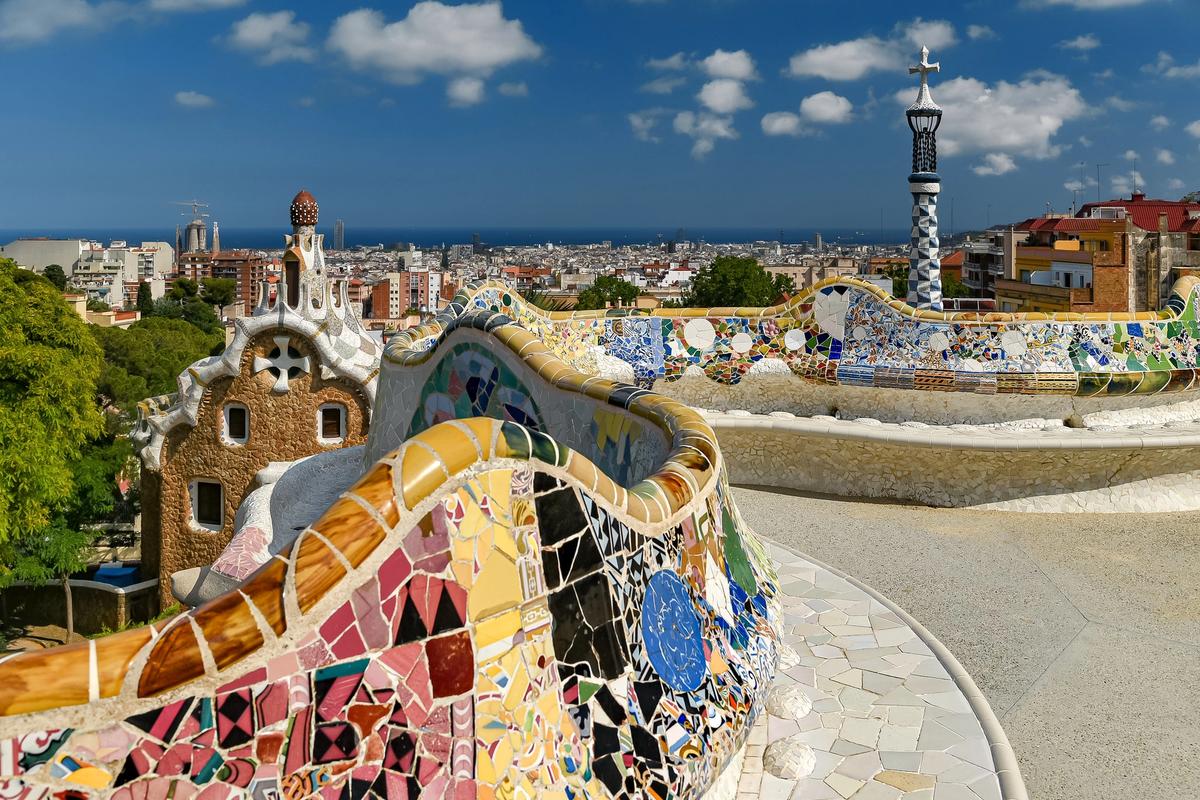Antoni Gaudí was 31 years old when he began work on the Sagrada Família in Barcelona. He was still at it at the age of 73, when he was hit by a tram and killed. The year was 1926 and the fantastical basilica, with its tapering towers and cavernous interior, was already a triumph. Today, still under construction, it continues to draw immense crowds. But as Elise Dubreuil, the co-curator of a new exhibition dedicated to the Catalan architect at the Musée d’Orsay, says: “There’s a whole world to discover beyond his best-known work”.

House of fun: chimneys with human and animal forms on the Casa Milà apartments (built 1906-16) in Barcelona © Arxiu Fotogràfic Centre Excursionista de Catalunya
Together with fellow curators Juan José Lahuerta and Isabelle Morin Loutrel, Dubreuil began working on this immersive retrospective in 2017. The show will situate the unique creations of the great master of Catalan Modernism within the artistic, social and political context of turn-of-the-century Barcelona, whose flourishing industry provided a platform (and plenty of wealthy patrons) for ambitious artists and architects. It will whisk viewers from his formative hands-on years via the eccentric casas he built in the Eixample neighbourhood to his visionary major project, the city’s new cathedral, which he dubbed “the temple”.

A tile from the facade of Casa Vicens, Gaudí’s first house in Barcelona (built 1883-88) © Pere Vivas/Triangle
“The name is famous around the world, but we want people to get to know Gaudí and his work in all its complexity,” Dubreuil says. “We want them to understand his motives and his legacy and why architecture was so important to him.” Crucial to that understanding are the architectural drawings and models made by Gaudí and his team, which provide insight into his creative process and his fascination with bold colour and curved forms. Among them are two original sketches of the church of Colònia Güell, the only plans to survive the destruction of his workshop during the Spanish Civil War. “They’re the only direct testimony we have from his hands, so they’re very precious,” Dubreuil says.
On display for the first time are wooden panels that adorned a room inside the Casa Milà, also known as La Pedrera (the stone quarry). “We were able to find them and we’re going to recreate the interior within the exhibition,” Dubreuil says. “The idea is that people can pass through the room and enter Gaudí’s world.” Throughout the exhibition, that world will be fleshed out with plaster casts, pieces of furniture, photography, and even a short film showing Salvador Dalí in front of the Sagrada Família.

Antoni Gaudí's a drawing of the Colònia Güell church (1908-10) Photo: MNAC, Barcelona, 2022
This first major show of Gaudí’s work in France for half a century will invite viewers to look beyond the soaring fairy-tale landmark and to get to know the singular artist who, in homage to Catalan history, took inspiration from gothic and Moorish styles and blended them with the motifs of art nouveau to shape Barcelona’s visual identity. In fact, very little is known about his personal life, beyond the fact that he rarely travelled and was deeply devoted to his practice and his faith. As Dubreuil adroitly points out, “his life was his work”.
• Gaudí, Musée d’Orsay, Paris, 12 April-17 July


